The reservoir in the garden plot always attracts the eye. On a hot summer day, he will give a feeling of coolness and refreshing thoughts. The quiet murmur of water will calm down, fill with energy and bring a good location of the spirit to anyone who needs it.
Species of artificial reservoirs There are many, the choice depends on the stylistic orientation of the garden and tastes of the owner. Dynamic streams, fountains and waterfalls create a sense of constant movement, they will suit people active and confident. Those who love calm and peace will give preference to a quiet pond, swimming pool or a small swamp. Properly selected water object on the site will give any landscape completeness and charm.
Classification of water bodies
Depending on the outlines, artificial reservoirs can be divided into 2 types:
- Formal - have strict correct forms. Often they are presented in the form of geometric shapes: oval, circle, square, rectangle. Sometimes such objects have more interesting polygonal or elliptical contours. Clearly decorated coastal lines allow no plants near such a pond, and the neat form will perfectly fit into any garden, regardless of its stylistics and square.
- The reservoir with free boundaries is suitable for large sections, because it takes quite a lot of space. The outlines of such a pond have a natural, natural look, but the shore needs to decorate garden plants. In addition, the design of the reservoir must correspond to the style of the garden itself.
Types of water bodies
Ponds with moving water
1. Waterfall is one of the types of dynamic reservoir. The place to create it should have a special relief with different heights. Ensure beautiful jet drops will help decorative stones laid out in the form of ledges. Water container should be well consolidated and in need of putting a drainage system. The size, height and design of the waterfall depend on the individual preferences and capabilities of the owner. This can be a sufficiently modest construction with several drop-down water flows, and there may be a noisy congestive stream. When planning a large waterfall, a spray radius should be taken into account in windy weather.
2. The cascade is an ensemble of several waterfalls, harmonizing each other and looking pretty beneficial among the garden landscape. The design of such a reservoir takes more strength and time, since it is necessary to take into account the interaction of individual aquatic streams and their reflection from various surfaces. A large number of planes and stones laid out in a special way create a wonderful effect of falling water and a quiet pleasant murmur.
3. Spring is another of gardens of rolling water. In order to ensure the dynamics of water, the stream in the country must have a slope. For this purpose, the depth of the bed gradually increases, starting from the source. For an artificial garden stream, you also need to ensure the removal of accumulating water. The decoration of such a reservoir depends on the taste and fantasy of the owner. Here you can use various stone sculptures, windmills or bridges, and planted decorative plants on the shores.
4. Fountain always has a spectacular look. Changing height, intensity, direction or even color, its jets create a beautiful and original ensemble. Illuminated fountain will delight the eyes in the dark, and in addition, you can enrich water with air bubbles and make the effect even more bright. To the selection of plants to decorate this reservoir it is worth noting with all seriousness, because not all cultures will be able to take root near the actively raging water.
Stoolwater reservoirs
1. Pond is a popular type of static reservoir. It is suitable for those who prefer natural and calm. A quiet mirror smooth will bring in the soul harmony and will give her rest to thoughts. The dacha pond can be decorated with sculptures, and on the shore there are green plantings. After setting in the water frogs, you can enjoy the sounds of wildlife every night.
2. The swamp also has a standing water, and besides richly populated by various aquatic plants. Such reservoirs are different from ponds with their small size, and the special color gives them precisely vegetation. The swamp in the country is almost never adorn using pebbles or sand, but they use many moisture-loving green plantings in the decor. In addition, on sites located in the lowland and having a large humidity, make a swamp quite simply. No special adaptations need, such a water will be filled with moisture naturally, and only in a strong drought will need to be filled with artificially.
3. Pool - water, performing not only decorative functions, but having a practical side. Under the scoring summer sun, swim in the transparent water of your own pool - the dream of many. This object requires special care, since it should always correspond to sanitary and hygienic standards. The pool owner will have to acquire equipment for cleaning, heating and anti-water flow. From the inside such a reservoir is laid out with tiles. Due to the variety of its forms and colors, you can create various original design. The pool's shores can be decorated with palm trees or other exotic plants planted in the pipes, and nearby the platform with umbrellas and sun loungers.
Standing reservoirs, especially such as a pond or a swamp, will be perfectly combined with the Japanese design style. To do this, it is enough to put on the shore of the arbor and plant decorative neat trees and shrubs. Plants should bloom beautiful and enjoy different leaf shades.
Features of the placement of garden reservoir
When planning to create an artificial reservoir in the garden plot, some aspects should be taken into account:
- The place for the pool you need to pick up carefully. It should be a plot located in the open air, but at the same time protected from a strong wind. The duration of exposure to sunlight on the water should not exceed 6 hours a day, otherwise not to avoid active flowering of green algae. In order to trace the lighting time with the sun of water stroit, the swimming pool planning is better to do in the summer.
- It is not worth placing a pond to the trees. First, it is possible to injure their roots, and secondly, the root system during expansion can damage the bottom of the reservoir.
- In summer, water in the pools is quick and blooms, so it needs to be changed regularly or provide direct access of running water.
- The approach to the water should be affordable - this will help with ease after him to care. In order to move freely around the reservoir, make a path near him.
- The size of the reservoir mainly depends on its purpose and the area of \u200b\u200bthe plot. Most often, the depth of the pond or a swamp does not exceed 0.5 m, so all decorative stones are visible on the day, which gives a water-based natural look.
- If the water object covers an area of \u200b\u200bmore than 10 m², its deepening can be increased to 1 m, while having routed a gentle slope in water.
- The reservoirs of strict geometric shape are often decorated with low shrubs. Such objects will look good if you put their shores with natural or artificial stone.
- In a small garden, a large reservoir looks unprofitable, as the area of \u200b\u200bthe plot is greater than even stronger. A narrow border on the edge of the pond produces the opposite effect, visually expanding the space around. But large water facilities have an advantage: they are easier to maintain the right ecosystem.
- The pools should not be located on the ground with a slope, as well as strongly cropped trees, otherwise the water will have to be constantly cleaning from fallen leaves.
- In the reservoirs of a rounded form, it is easier to maintain purity, since garbage is usually accumulated in the corners, to remove which is problematic.
The technology of creating a garden pond can be viewed on video:

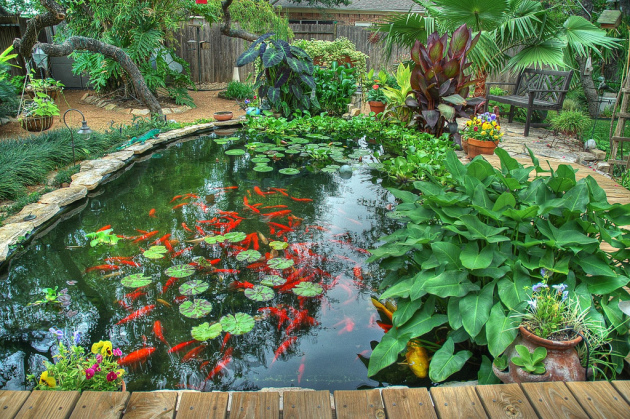
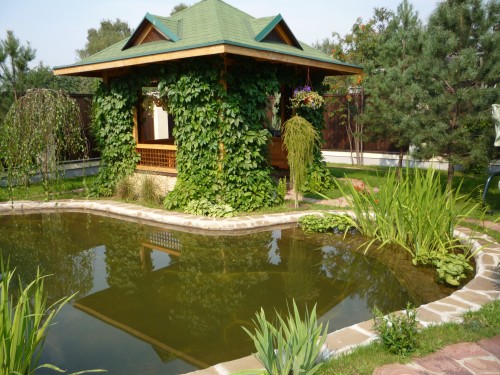

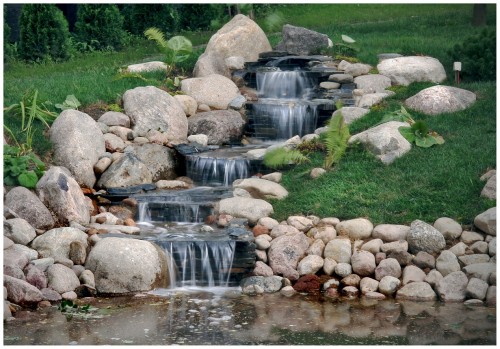
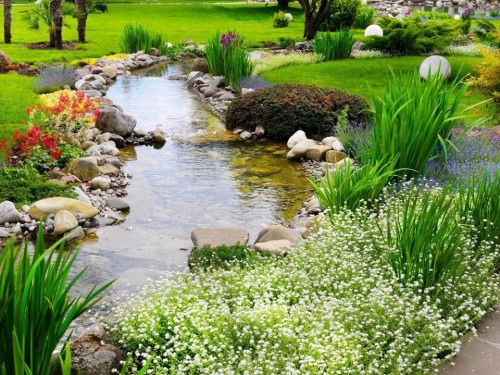
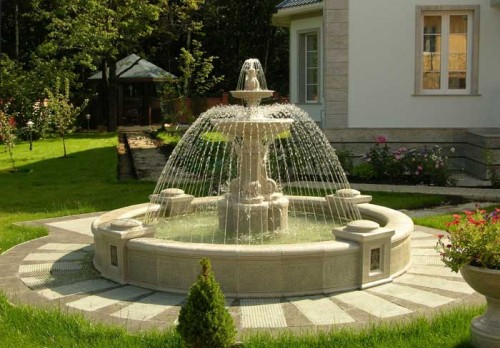
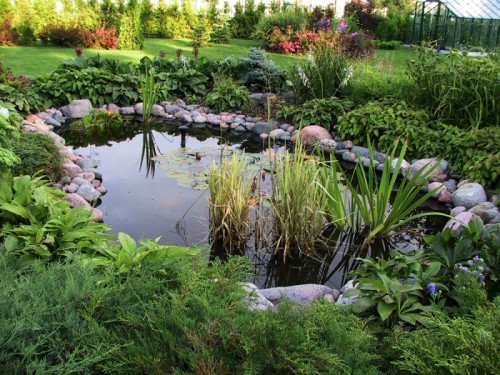
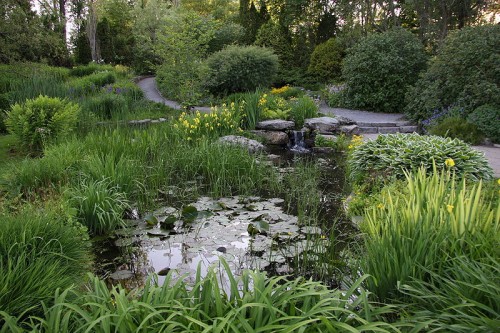
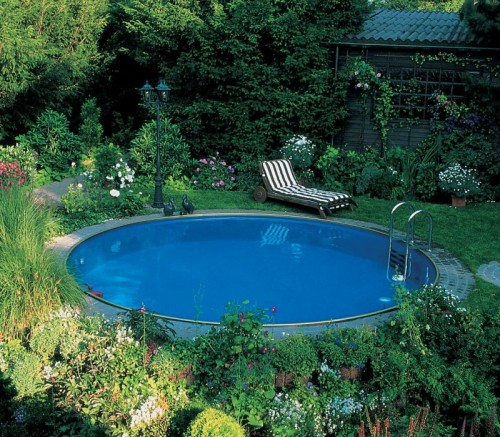
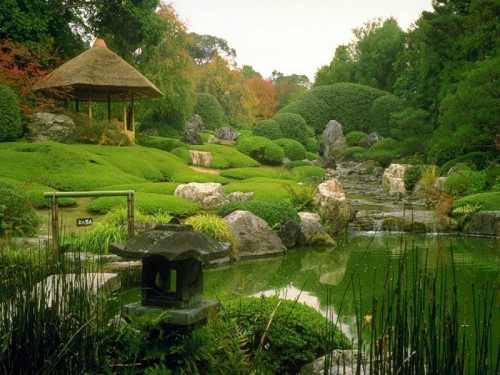












 Start a discussion ...
Start a discussion ...